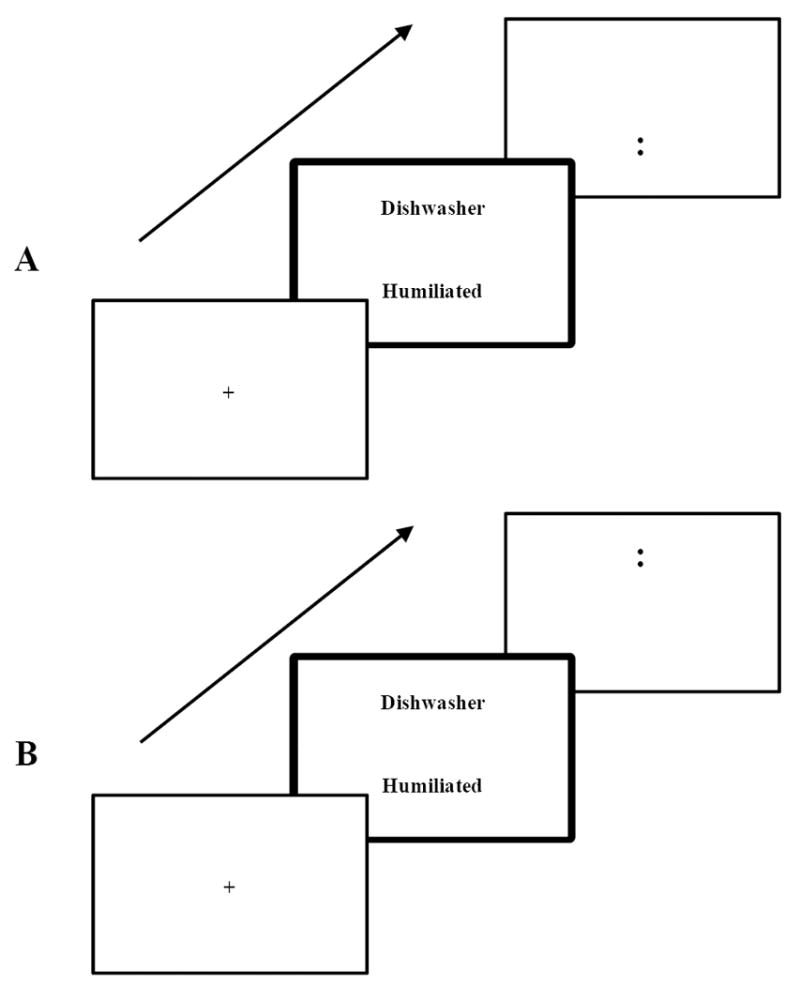Figure 1.

Two stimuli differing in emotional valence (threat or non-threat) are presented at the same time usually for 500ms, and then followed by a probe (i.e. colon). In the classic dot probe task to measure an attention bias, a probe appears shortly after either of the locations that the two stimuli were presented, with the same frequencies (i.e. 50%, trials A and B are equally mixed). On the other hand, in the modified dot probe task (i.e. Attention Bias Modification Treatment), a probe always appears in the location of neutral stimulus (i.e. 100%, only B trials).
